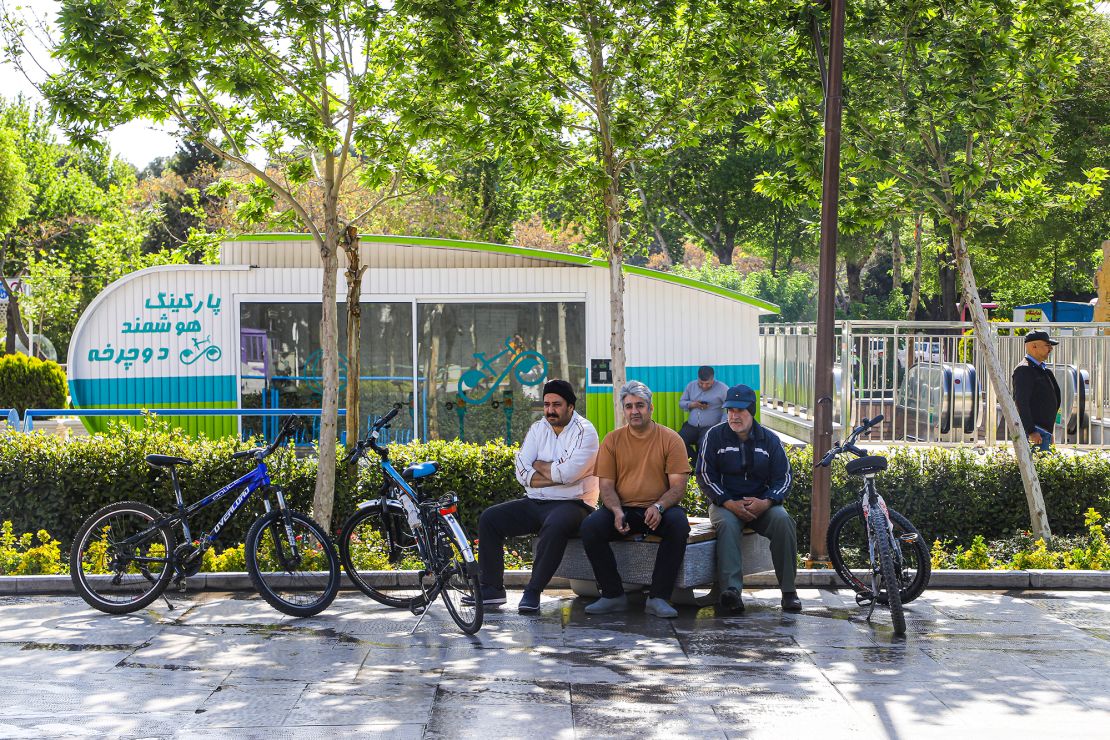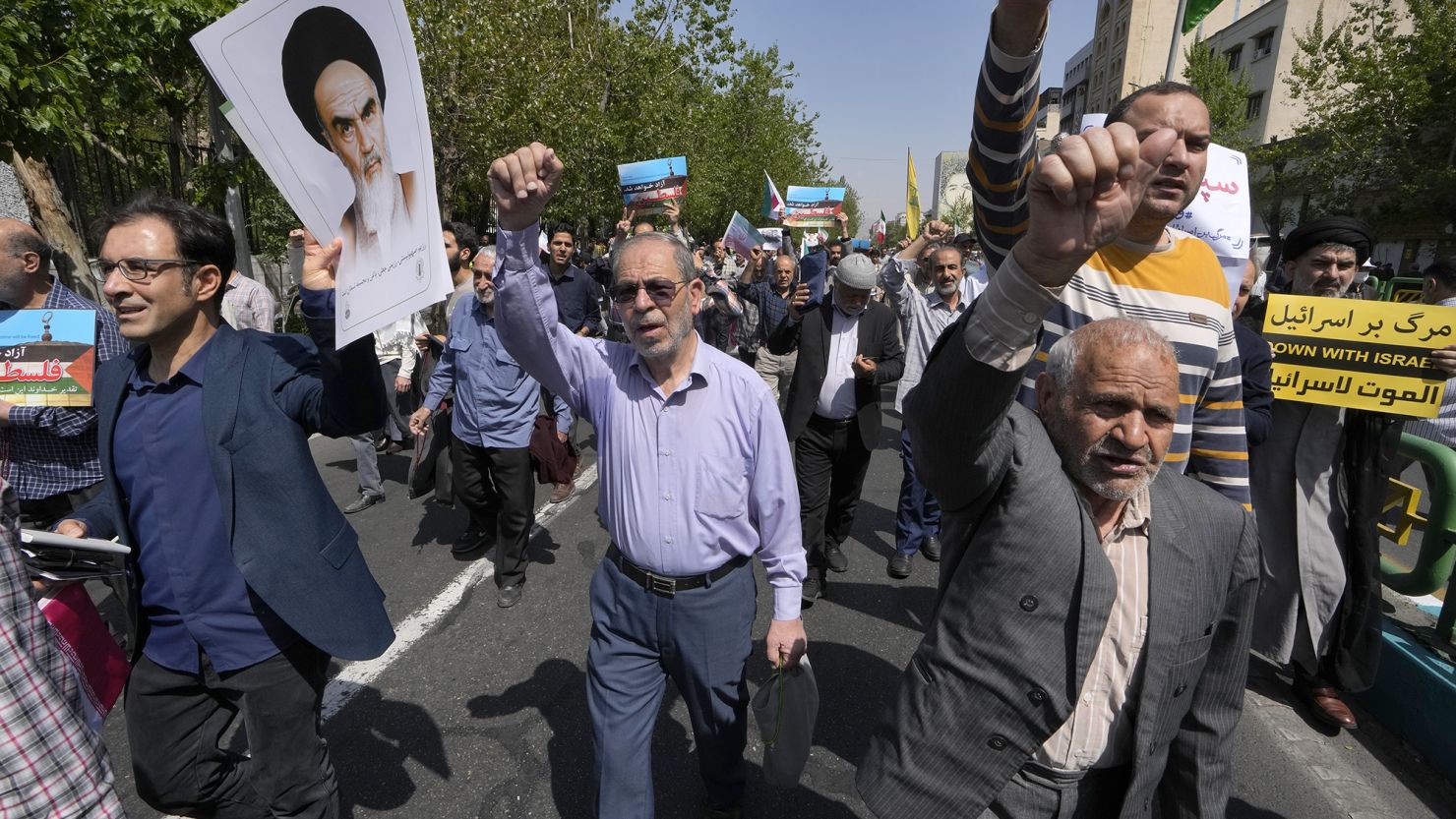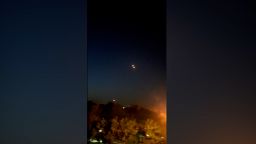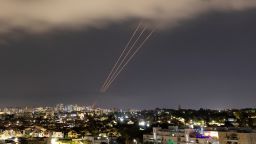Editor’s Note: A version of this story appears in CNN’s Meanwhile in the Middle East newsletter, a three-times-a-week look inside the region’s biggest stories. Sign up here.
The scope of Israel’s military response to Iran’s first-ever direct attack on the country remains murky. Israeli officials have yet to publicly acknowledge responsibility for reported overnight explosions in parts of Iran on Friday. Tehran has dismissed these as attacks by “tiny drones” that were shot down by its air defense systems.
Iran may be downplaying what was likely to have been a significant but limited Israeli attack, but that seems to be secondary to the larger forces at play. What is plain to see is that both Iran and Israel are keen to wrap up the most dangerous escalation between the two regional powerhouses to date.
This month’s dramatic escalation, which kicked off with an apparent Israeli airstrike on Iran’s consulate in Damascus, followed by a largely foiled Iranian attack of over 300 airborne weapons on Israel, seems to have given way to a rapid climbdown. Shortly after the Friday morning attack in Iran, a regional intelligence source told CNN’s Nic Robertson that Iran was not expected to respond further, and that the direct state-to-state strikes between the two enemy states were over.
The latest flare-up brought the stakes into sharp focus, but it also exposed the limits of a direct confrontation between Iran and Israel.
By attacking Iran’s consulate in Syria on April 1 and killing a senior Iranian commander that serves as a key intermediary between Tehran and Lebanon’s Hezbollah, Israel risked provoking a response from the powerful Shia militant group on its northern border. As part of Iran’s retaliatory attack on Israel, its weapons navigated over at least two neighboring countries that house US bases.
What happens between Iran and Israel rarely stays between Iran and Israel. The region is deeply intertwined. That heightens the risks of military action, but it also acts as guardrails against a potential conflagration.

So when US officials said last weekend that Washington would not participate in an Israeli response to Iran’s attack on Israel, that seemed to immediately take the wind out of the sails of a potential escalation.
US forces had shot down more than 70 of Iran’s weapons as they headed to Israel. By buttressing Israel’s defenses, the US had ostensibly done its part in protecting its stalwart ally. But participating in Friday’s attack would have been a step too far for the US, thrusting a region dotted with US-allied states into the unknown.
Tehran’s regional considerations may also be cause for restraint. Its fledgling friendships with Saudi Arabia and the United Arab Emirates – both major US allies – are a centerpiece of Iranian President Ebrahim Raisi’s foreign policy. Diplomatic relations between Tehran and Riyadh – former archnemeses – were restored during talks brokered last year by China, which threw its weight into maintaining those normalization agreements. Region-wide turmoil would risk compromising those key relationships.
Those dangers may be lost in Iran and Israel’s more hawkish quarters, where the more extremist elements may be itching for a final showdown. Israel’s far-right National Security Minister Itamar Ben Gvir blasted Friday’s attack as “weak.” Over the past week, Israeli media reported that he had urged Israel’s war cabinet to “go crazy” apparently bristling at indications of a tempered military response from Israel.
In Iran, analysts speculated that the shooting down of Iranian weapons in and around Israel’s airspace was likely to have underscored an imbalance of power in favor of its enemy, ultimately empowering the hardliners in Tehran to flout international pressure and advance the country’s long-feared nuclear program.
This month’s flare-up will undoubtedly stir up domestic tensions as the two sworn enemies return to their long-running shadow war. Iran’s non-state allies will continue to fight Israel and the US in various parts of the Middle East — they have vowed to keep up the fight as long as Israel’s devastating war in Gaza continues. Those battles, which span Iraq, Lebanon, Syria and Yemen, grow in complexity the longer they go on.
Meanwhile, parties to these conflicts will continue to test the limits of the unwritten rules of engagement, hoping to assert their power and brandish their arsenal while preventing a complete downward spiral into war.
There is much to read between the lines of the latest flare-up. But it is clear that both sides of the regional battle have decided that they have too much to lose in all-out war.
CNN’s Mostafa Salem contributed to this article.






